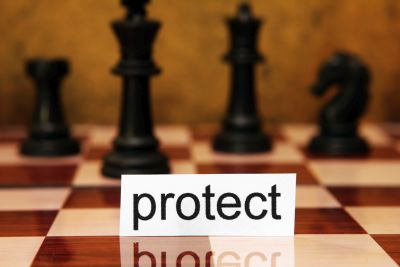How GAP Insurance Can Save You Thousands

Let’s talk about something that could save you a ton of money—GAP insurance. I know insurance isn’t the most thrilling topic for many, but stick with me. This little nugget of knowledge could keep thousands of pounds in your pocket.
What is GAP Insurance?
First things first, what exactly is GAP insurance? GAP stands for Guaranteed Asset Protection. It’s a type of insurance coverage that helps you if your car is written off due to an accident, theft, or any other reason. Essentially, it covers the ‘gap’ between what your car is worth at the time of loss and what you still owe on your car loan.
Why You Need It
Imagine this scenario: you’ve just driven your shiny new car off the lot. As we all know, a car’s value drops the minute it leaves the dealership. Fast forward a year or two, and you’re in an unfortunate accident.
The insurance company determines that your car’s market value is significantly less than what you still owe on it. Without GAP insurance, you’d have to cover the difference out of your own pocket. Ouch, right? That’s where GAP insurance from Insurance Cloud comes in handy.
The Mechanics of GAP Insurance
Now that you have a basic idea of what GAP insurance is, let’s dive a bit deeper into how it works.
How Does It Work?
When you buy a new car, its value starts to depreciate immediately. Standard car insurance typically covers the current market value of your car, not the amount you originally paid for it or what you owe on it. This can leave a significant gap, especially if you have a long-term loan or a lease. GAP insurance bridges this gap by covering the difference.
Here’s a breakdown:
- Car’s Purchase Price – £20,000
- Loan Amount – £18,000 (after down payment)
- Car’s Value After 2 Years – £12,000
- Remaining Loan Amount – £15,000
If your car gets written off, your standard insurance will pay you the current market value (£12,000). But you still owe the lender £15,000. GAP insurance will cover that £3,000 difference.
Types of GAP Insurance
There are different types of GAP insurance to suit various needs:
- Finance GAP Insurance – Covers the difference between the car’s value and the remaining finance owed.
- Return to Invoice (RTI) GAP Insurance – Covers the gap between the car’s current value and the original invoice price.
- Vehicle Replacement GAP Insurance – Covers the cost difference between the current value of your car and the cost of buying a new one, similar to the original model.
Benefits of GAP Insurance
Alright, so why should you consider GAP insurance? Here are some compelling reasons:
Financial Security
The most obvious benefit is financial security. Cars depreciate rapidly, and if you’re involved in an accident or your car is stolen, you might find yourself in a tricky financial situation. GAP insurance ensures that you won’t be left scrambling to find extra cash to pay off your car loan.
Peace of Mind
There’s something to be said about peace of mind. Knowing that you’re covered in case of the worst can be a huge relief. No one wants to think about accidents or theft, but having a safety net in place can help you sleep better at night.
Affordable Protection
Considering the potential thousands you could save, GAP insurance is relatively affordable. The cost will depend on factors like your car’s make and model, its age, and the type of coverage you choose, but it’s a small price to pay for the protection it offers.
When Should You Consider GAP Insurance?
Not everyone needs GAP insurance, but it can be particularly beneficial in certain situations:
New Car Purchase
If you’ve just bought a brand-new car, it’s going to depreciate quickly. GAP insurance can protect you from the significant value drop in the first few years.
High Loan Amount
If you financed a large portion of your car, the amount you owe might be much higher than the car’s current market value. GAP insurance ensures you’re not left with a hefty loan to pay off if something happens to your car.
Leasing a Car
Leasing a car can be a great option, but if the car is written off, you could still owe a significant amount to the leasing company. GAP insurance covers this gap as well.
How to Buy GAP Insurance
Convinced you need GAP insurance? Here’s how to get it:
Through the Dealer
Many dealerships offer GAP insurance when you purchase your car. This can be convenient, but it’s often more expensive than buying a policy independently.
Independent Providers
Shopping around can save you money. There are numerous insurance providers who offer GAP insurance, often at a lower rate than the dealer.
Online Comparison
Use comparison websites to find the best deal. These sites allow you to compare different policies and prices, ensuring you get the best coverage at the best price.
Common Myths About GAP Insurance
There are a few misconceptions floating around about GAP insurance. Let’s clear those up.
“It’s a Scam”
Some people think GAP insurance is just a way for dealers to make more money. While it’s true that dealer-sold GAP insurance can be pricey, the coverage itself is valuable if you find yourself in a situation where you need it.
“My Standard Insurance is Enough”
Standard car insurance covers the current market value of your car, not the loan amount. If you owe more on your car than it’s worth, standard insurance won’t cover the difference.
“Only New Cars Need GAP Insurance”
While it’s most beneficial for new cars, GAP insurance can also be valuable for used cars, especially if you have a high loan balance compared to the car’s value.
Final Thoughts
GAP insurance might not be the most exciting topic, but it’s definitely one of the most practical and potentially money-saving decisions you can make as a car owner.
It provides a financial safety net that standard car insurance simply doesn’t offer. Whether you’re buying a new car, leasing, or have a significant loan on a used vehicle, GAP insurance is worth considering.



